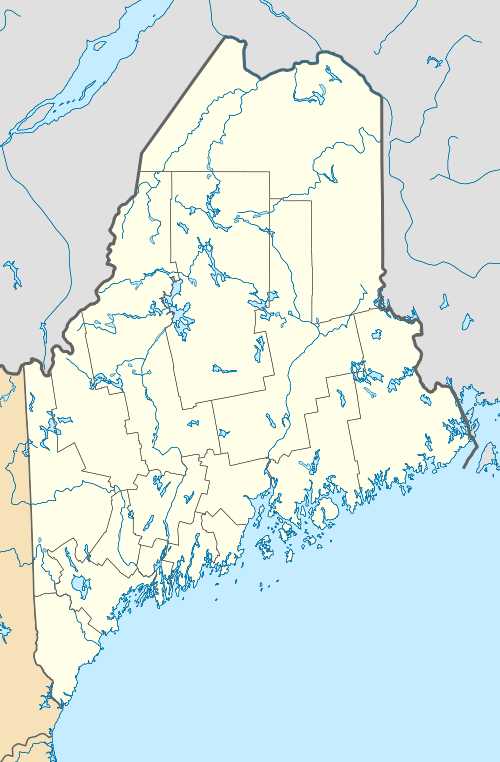Portland Breakwater Light
 Portland Breakwater Lighthouse after restoration | |
 | |
| Location | NE end of Portland Breakwater in Portland Harbor, South Portland, Maine |
|---|---|
| Coordinates | 43°39′19.872″N 70°14′5.471″W / 43.65552000°N 70.23485306°WCoordinates: 43°39′19.872″N 70°14′5.471″W / 43.65552000°N 70.23485306°W |
| Year first constructed | 1855 |
| Year first lit | 1875 (current tower) |
| Automated | 1934 |
| Deactivated | 1942 |
| Foundation | Granite block caisson |
| Construction | Iron plate with brick lining |
| Tower shape | conical |
| Markings / pattern | resembles 4th century Greek monument |
| Focal height | 30 feet (9.1 m) |
| Original lens | Sixth order fresnel, 1855 |
| Characteristic | Flashing white 4 s |
| USCG number | |
|
Portland Breakwater Light | |
| Architect | Thomas U. Walter |
| Architectural style | Greek Revival |
| NRHP Reference # | 73000238[3] |
| Added to NRHP | June 19, 1973 |
The Portland Breakwater Light (also called Bug Light) is a small lighthouse in South Portland, Maine.
History
The lighthouse was first built in 1855, as a wooden structure, but the breakwater was extended and a new lighthouse was constructed at the end of it in 1875. The new lighthouse was made of curved cast-iron plates whose seams are disguised by six decorative Corinthian columns. Its design was inspired by the Choragic Monument of Lysicrates in Athens, made well known by engravings. The architect was Thomas U. Walter, most noted as the designer of the U.S. Capitol east and west wings and its current dome. Wooden sheds and a six-room house for the lighthouse-keeper were added incrementally as needed. In 1897 Spring Point Ledge Light was erected and the houses around Bug Light were demolished and the Spring Point Ledge Lighthouse keepers tended to both lighthouses. During World War II, the breakwater was slowly absorbed by landfill as the New England Shipbuilding Corporation built two shipyards next to the lighthouse. These shipyards produced Liberty Ships for the war effort. Because of the smaller breakwater, there was a lesser need for the lighthouse and it was decommissioned in 1943.[1]
Restoration
The light was fully restored in 1989 and was reactivated in 2002. It appears as a private aid to navigation in the US Coast Guard Light List as South Portland Breakwater Light.[2] Today a park named after the lighthouse, Bug Light Park, allows visitors to view the Portland Breakwater Light up close, while memorializing the shipbuilding efforts of World War II.[4] The light was added to the National Register of Historic Places as Portland Breakwater Light on June 19, 1973, reference number 73000238.
Gallery
 Bug Light before restoration (1962)
Bug Light before restoration (1962)
- The first, wood, Portland Breakwater Light.
See also
References
- 1 2 "Historic Light Station Information and Photography: Maine". United States Coast Guard Historian's Office. 2009-08-08.
- 1 2 Light List, Volume I, Atlantic Coast, St. Croix River, Maine to Shrewsbury River, New Jersey (PDF). Light List. United States Coast Guard. 2090. p. 64. Check date values in:
|date=(help) - ↑ National Park Service (2009-03-13). "National Register Information System". National Register of Historic Places. National Park Service.
- ↑ "Lighthouse.cc -- Portland Breakwater Lighthouse". Retrieved February 8, 2007.
